To calculate the Fourier transformation of a triangle signal it’s a good approach to start with the following signal shape. That keeps the calculations easy.
Peak = π/2


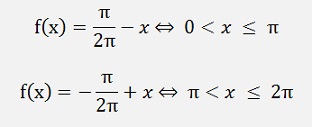
For the ak components:

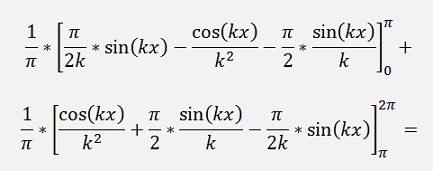

If k is odd

If k is even

For the bk components:
As the function is even:

Now if peak = h instead of π/2
If k is odd

If k is even

Now we shift the signal as much to the right to get the final shape (that’s –π/2):
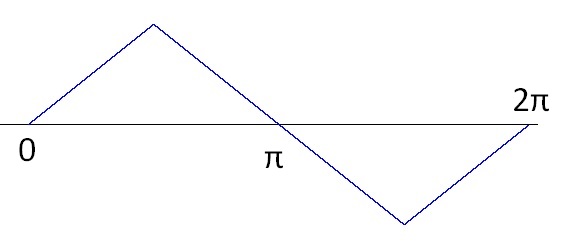
As this wave form is –π/2 phase shifted and with the following considerations:
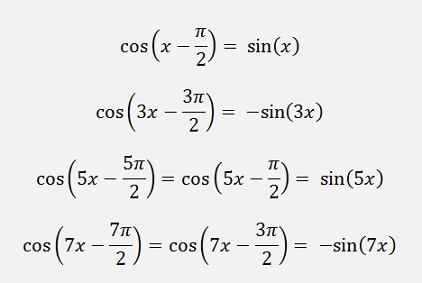
…
we get
If k is odd

If k is even

and

Implemented into a function that is:
private void Triangle(double peak)
{
int
j;
double sign = 1.0;
for (j = 1; j < 500; j++)
{
}double sign = 1.0;
for (j = 1; j < 500; j++)
{
c[j].real
= 0;
if (j % 2 == 0)
{
}if (j % 2 == 0)
c[j].imag
= 0;
else{
c[j].imag
= sign * peak * 8 / Math.PI
/ Math.PI
/ j / j;
sign = -sign;
}sign = -sign;
And that creates the following spectrum for the first 30 harmonics:
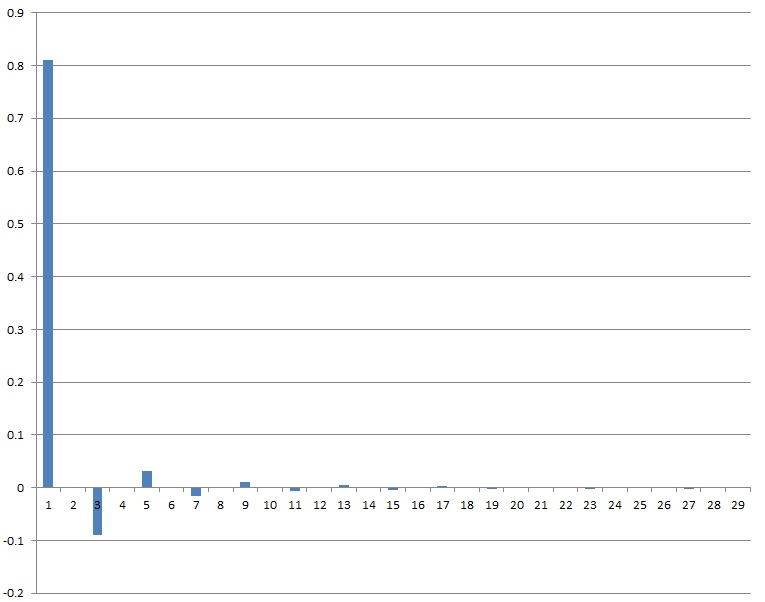
C# Demo Project Fourier signals

